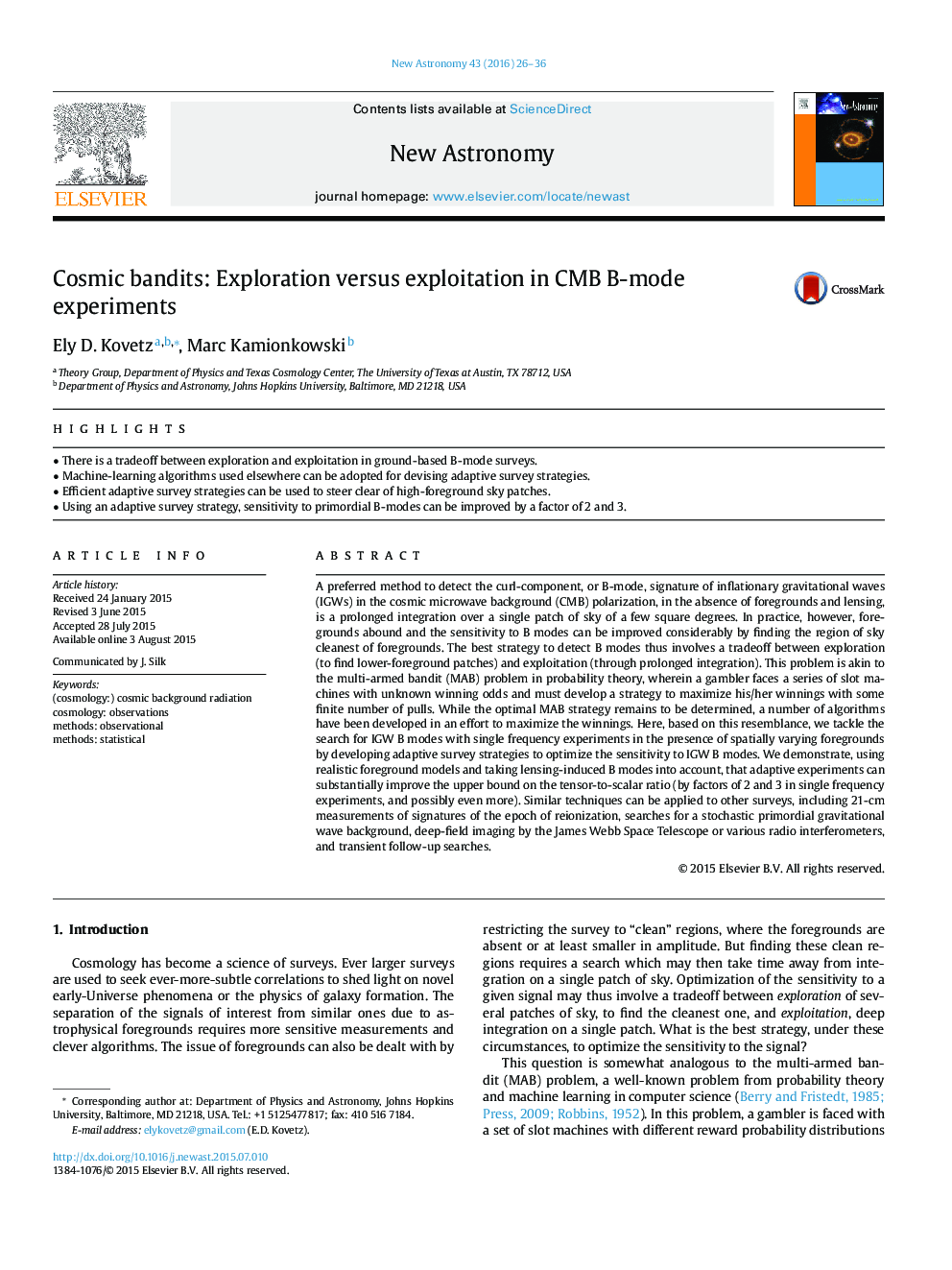| Article ID | Journal | Published Year | Pages | File Type |
|---|---|---|---|---|
| 8141467 | New Astronomy | 2016 | 11 Pages |
Abstract
A preferred method to detect the curl-component, or B-mode, signature of inflationary gravitational waves (IGWs) in the cosmic microwave background (CMB) polarization, in the absence of foregrounds and lensing, is a prolonged integration over a single patch of sky of a few square degrees. In practice, however, foregrounds abound and the sensitivity to B modes can be improved considerably by finding the region of sky cleanest of foregrounds. The best strategy to detect B modes thus involves a tradeoff between exploration (to find lower-foreground patches) and exploitation (through prolonged integration). This problem is akin to the multi-armed bandit (MAB) problem in probability theory, wherein a gambler faces a series of slot machines with unknown winning odds and must develop a strategy to maximize his/her winnings with some finite number of pulls. While the optimal MAB strategy remains to be determined, a number of algorithms have been developed in an effort to maximize the winnings. Here, based on this resemblance, we tackle the search for IGW B modes with single frequency experiments in the presence of spatially varying foregrounds by developing adaptive survey strategies to optimize the sensitivity to IGW B modes. We demonstrate, using realistic foreground models and taking lensing-induced B modes into account, that adaptive experiments can substantially improve the upper bound on the tensor-to-scalar ratio (by factors of 2 and 3 in single frequency experiments, and possibly even more). Similar techniques can be applied to other surveys, including 21-cm measurements of signatures of the epoch of reionization, searches for a stochastic primordial gravitational wave background, deep-field imaging by the James Webb Space Telescope or various radio interferometers, and transient follow-up searches.
Related Topics
Physical Sciences and Engineering
Physics and Astronomy
Astronomy and Astrophysics
Authors
Ely D. Kovetz, Marc Kamionkowski,
